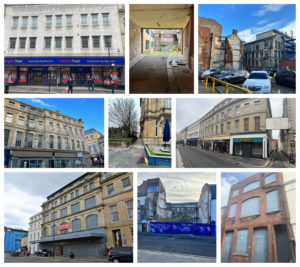North East investment company Develop North PLC (Develop North) has announced proposals to provide increased access to real estate investment opportunities in the North East of England and significantly expand its financial support for businesses, housing and regeneration projects across the region.
Broadoak were appointed by Develop North in February to help them explore options to grow the fund and have helped them to devise a new strategy which (subject to shareholder approval) will be implemented later this year.
Since its inception in 2017, Develop North has deployed more than £80 million in capital to support 39 projects, creating and supporting over 12,000 jobs and helping deliver a gross development value in excess of £275 million. The new fundraise will help accelerate the company’s growth and provide investors with a platform to capitalise on the strong tailwinds currently benefitting the North East.
The proposed investment policy will focus on three deployment strategies: real estate lending, as well as commercial and residential real estate investment, all with a strong regional focus. The changes reflect a growing demand for flexible, locally informed capital that can accelerate economic growth and support community infrastructure.
The company’s expanded investment policy will enable Develop North to:
Provide real estate loans to support housebuilding and commercial development.
Invest in and upgrade commercial real estate assets to attract tenants and drive regeneration.
Secure residential real estate through freehold or leasehold and to provide capacity and support to supported housing providers.
The enlarged asset management team will include Broadoak and Homes or Houses who will work alongside existing investment adviser Tier One Capital and will bring deep regional insight and sector expertise. This will enable Develop North to identify and execute high-quality investments that align with market opportunities and community needs.
John Newlands, Chairman of Develop North, said: “The North East is on the cusp of transformational growth, and the private sector has a vital role to play in supporting that momentum. With devolution and investment frameworks now in place, the North East and Tees Valley Combined Authorities are making the region more investable than ever. As a trusted investment partner, Develop North is well-placed to ensure that the investment opportunity of the North East is open to everyone.”
Fergus Trim, Director of Broadoak added: “This announcement from Develop North is an exciting milestone towards the delivery of an important source of additional capital for the North East. The widening of the investment policy gives a great platform for balanced exposure to real estate opportunities in the region. We are delighted that Broadoak has been a core part of the team, working with Tier One Capital and Develop North in helping them reach this stage and look forward to working closely on the next phase of Develop North’s evolution.”
Ian McElroy, Chief Executive of Tier One Capital, added: “There is a growing expectation that institutional investors, including Local Government Pension Schemes, will support investment into UK regions with real economic potential. We are witnessing the start of some real momentum in this process, with a number of globally recognised investment firms now allocating capital to the North East. With two proactive and positive metro mayors in place with strong devolution settlements, the North East is seeing increased attention from policymakers and the market alike.”
